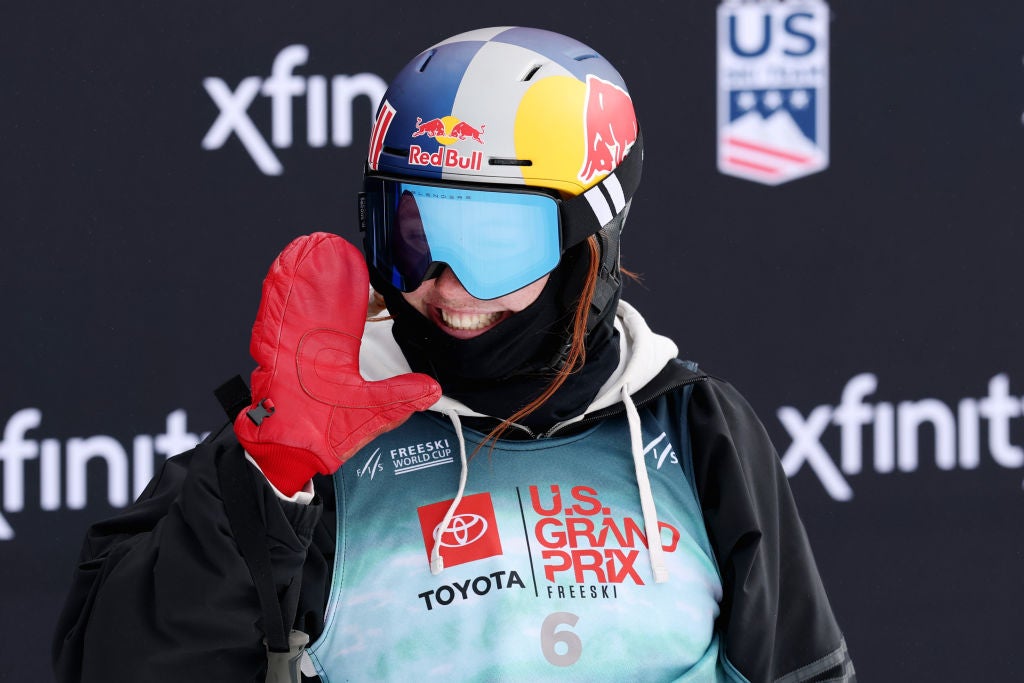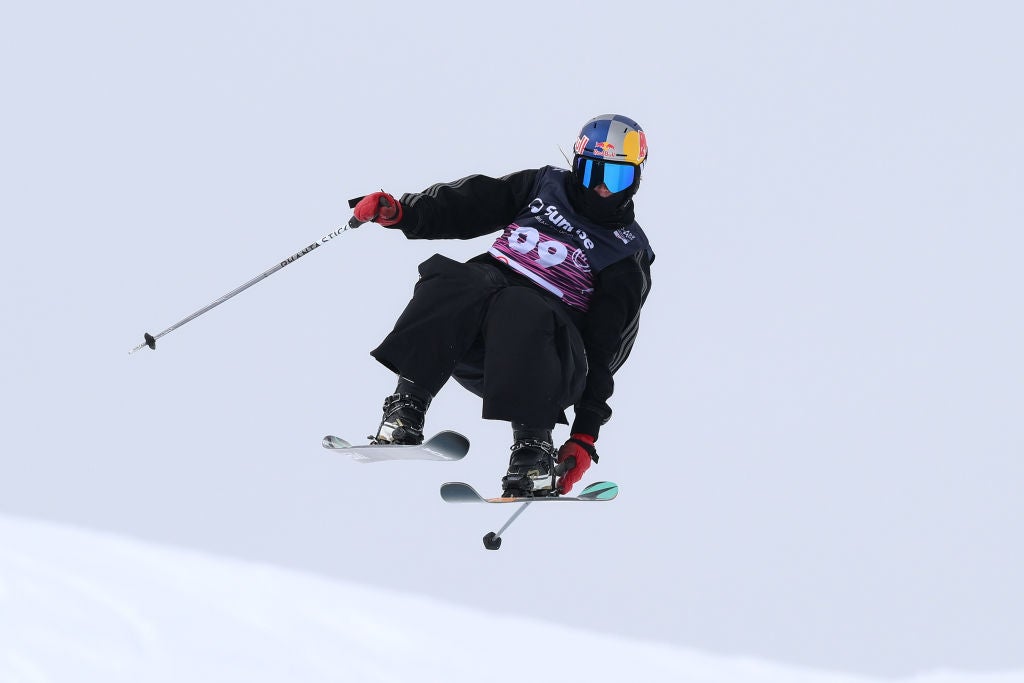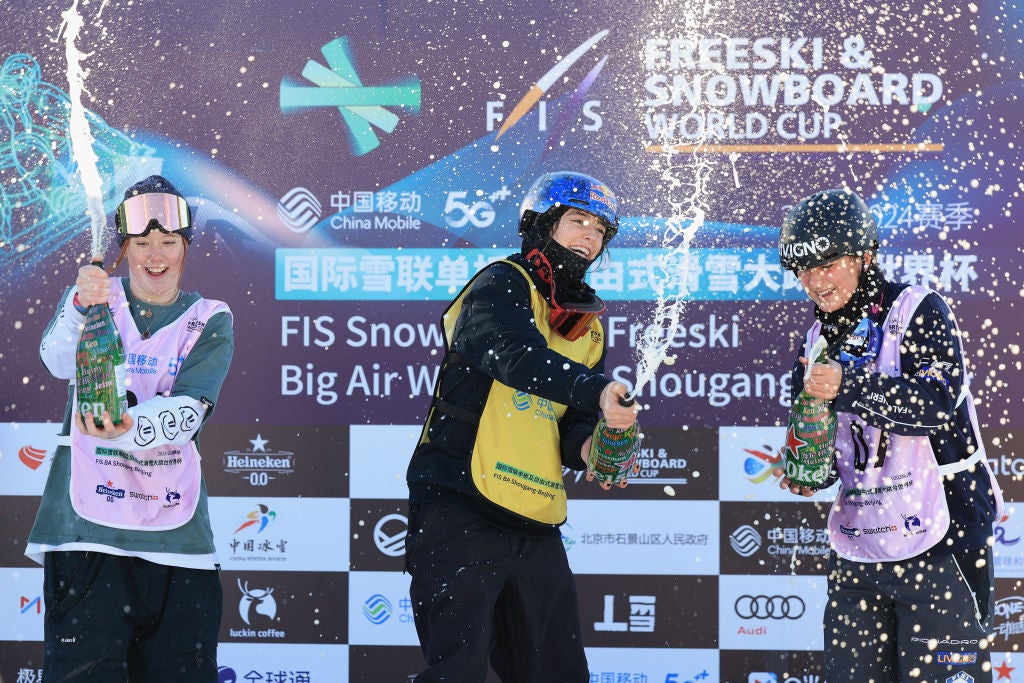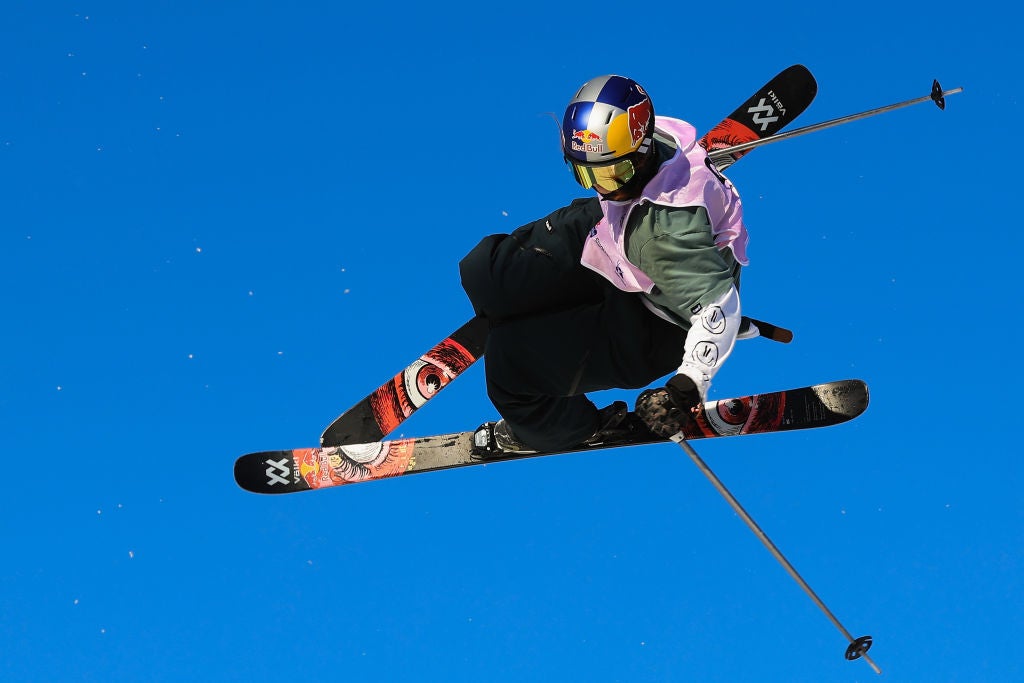ARTICLE AD BOX
Kirsty Muir was in the form of her life when the ground was ripped from under her feet. The talented Scottish freestyle skier, who competes in the slopestyle and Big Air disciplines, secured two World Cup podiums in the first half of the 2023-24 season and was on course for a best-ever campaign.
One of those podiums was in the Big Air in Copper Mountain, US in December 2023. She picked up bronze – but the 19-year-old was also troubled by a niggle in her knee. On her return home, an MRI revealed she had in fact ruptured her anterior cruciate ligament (ACL) and sustained meniscus damage. Over a year on the sidelines, including surgery on both the knee and an existing shoulder injury, followed.
Her return to action this January was “emotional”, the Aberdeen native tells The Independent, but it was almost as if she had never left, as she qualified for both finals in her first competition back, in Aspen, Colorado.
“Luckily when you’re skiing you have goggles so no-one could see I was crying a little bit when I first got back!” she says. “But it was all from happiness. I was over the moon, quite overwhelmed.
“There were so many different aspects: I hadn’t seen my friends in a long time, I hadn’t had the adrenaline and the nerves of a comp. Even just comp training is stressful so I had a lot going on in my brain.”

But having spent 14 months out of action, neither she nor her team put pressure on her return, and she says the season has “100%” exceeded her expectations.
“Mostly it was just seeing how I’d get on,” she says of her approach to this campaign. “We obviously knew that this year was the Olympic qualification year so that was one thing on our checklist, trying to get the results to put towards that.
“At that point when [the ACL tear] happened I really did feel like it was the best I’d ever been at. It was a shock to the system for sure. So to come back, and to have got a few [events under her belt], it does make it all feel worth it.”
Just two months into her comeback she hit another milestone, notching a first-ever World Cup win with slopestyle gold in Tignes, France. Victory was a “confidence boost,” but she adds that more importantly, “You can always have doubts during a rehab that you won’t come back as strong, so that eliminated all the doubts. I really did feel like I was properly back and ready to fight at the competitions again.”

She set the score to beat in qualifying, and by the time she was in the start gate for her second run – as the last athlete to go – she already knew she had won. “It was a crazy feeling, I hugged my physio and coach at the top, and got to do a victory lap, which you don’t get to do very often! It was unreal, I had the biggest smile on my face.”
She adds that while the business end of the competition went well, it required a pep talk from Freeski head coach Jamie Matthew to put her in the right frame of mind to make it to the finals.
“I had the most terrible training ever [before qualification], I hadn’t even put a run down that I wanted,” she recollects. “You only get 45 minutes to an hour and that’s maybe four, five, six runs, and that’s not much to warm up. I got into the gate [for qualifying] and was really nervous and Jamie was like, ‘you don’t need to be, if you don’t get a run down, it’s whatever’.
“He managed to reset me a little bit. It felt like it all came together and I really wasn’t thinking too much, which was the best scenario!”

Even aged 20 Muir is a seasoned competitor, winning three elite national titles at 13 and going to the 2022 Winter Olympics as GB’s youngest athlete, at 17, which she described as a “surreal” experience. Muir qualified for both the slopestyle and Big Air finals, finishing eighth and fifth respectively, and has high hopes of a podium finish this year.
“I’m excited because I feel like I’ll really get the Olympic experience this time,” she says. “I think it’ll feel completely different, but I’ll also have a bit of experience from the last one as well.”
Muir made her debut on the World Cup circuit aged 15 and recalls, “I was quite nervous and timid, so I kind of kept to myself. Around the [Beijing] Olympics and just after I came out of my shell a bit.
“I feel like I always used to be so in my own bubble, I was so stressed. I didn’t hate it but I didn’t enjoy the comps as much as I could have. I’m not just skiing to compete, I’m skiing to have a good time and do what I really want to do.

“So I’m trying to get a good balance between having pressure on myself and being a competitor, because I very much am hard on myself when I’m competing, but also trying to take it chill and enjoy it, because I feel like when I’m more focused on the slope then I ski better.”
Muir adds that the adversity she experienced in her long spell on the sidelines has also helped her come back stronger. Her ACL injury was different from that of many athletes, who hear the tell-tale popping sound and instantly realise what’s happened. She only discovered the extent of the issue because she already had an MRI booked for her existing shoulder problem.
“You hear about the sound that it makes and they’re immediately in agony, but for me, it’s like it could have happened at any point, or it could have happened gradually over time, just with the impact of our sport,” the 20-year-old says.
“We do a lot of gym work and we kind of put [the fact that it initially went unnoticed] down to my muscles being able to compensate for it. I went home and got the MRI just in case, but if I hadn’t, I would have continued the season, having done all the gym work.

“It was definitely difficult to have the double rehab. Your body uses so much energy to heal something and because it was split, I feel like it took a bit longer to heal than it could have.”
Muir tried to “find who I am outside of skiing” during her long rehab process and appreciate the rare downtime she was offered. She found she loved mountain biking, which had the added bonus of aiding with her return to skiing. “I could get on the bike way sooner than I could get on skis, and it kind of replicated the flow and feeling you get on skis with the mountain bike jumps. That’s something I still do now every time I’m home.”
The road back to full fitness took its toll, but she never questioned her future in the sport.
“There were never points when I was like, I’m not going to go back to skiing, but you always think, ‘will my knee be strong enough, will I feel back to normal’, all these things. Because during the rehab it does feel weird – it doesn’t even feel like your knee sometimes.
“But I always knew I’d be coming back to skiing no matter what, because that’s the thing I love the most. The feeling of missing skiing spurs you on to keep pushing back to it. If you didn’t love the sport you wouldn’t have the motivation to get through it.”









 English (US) ·
English (US) ·